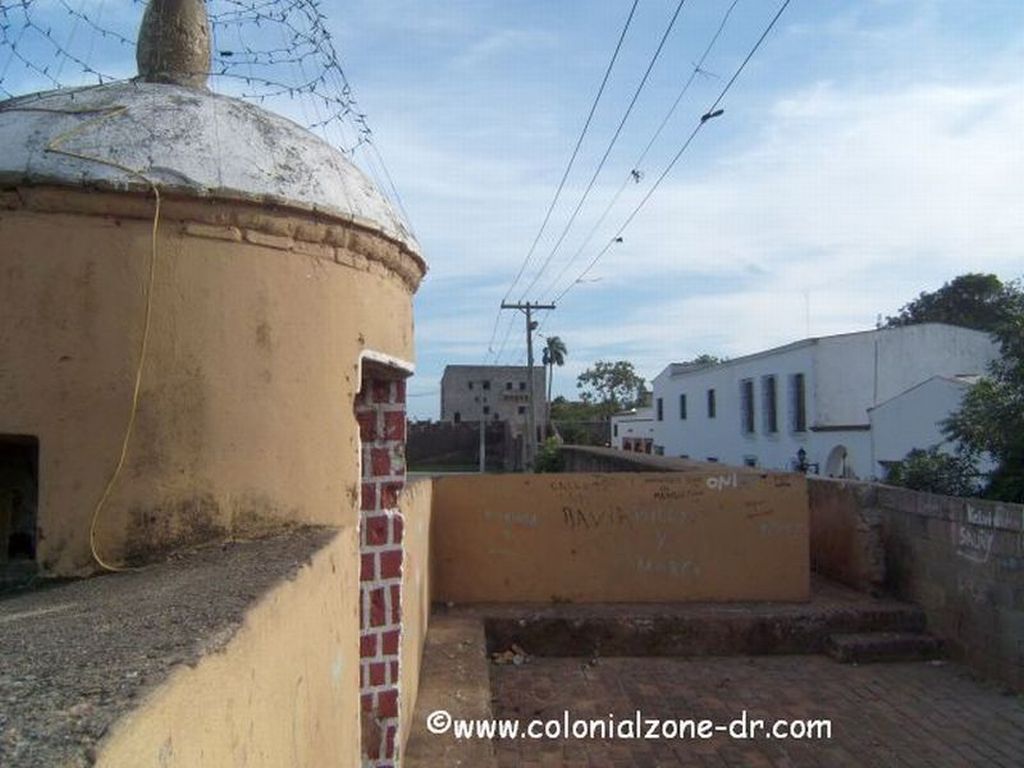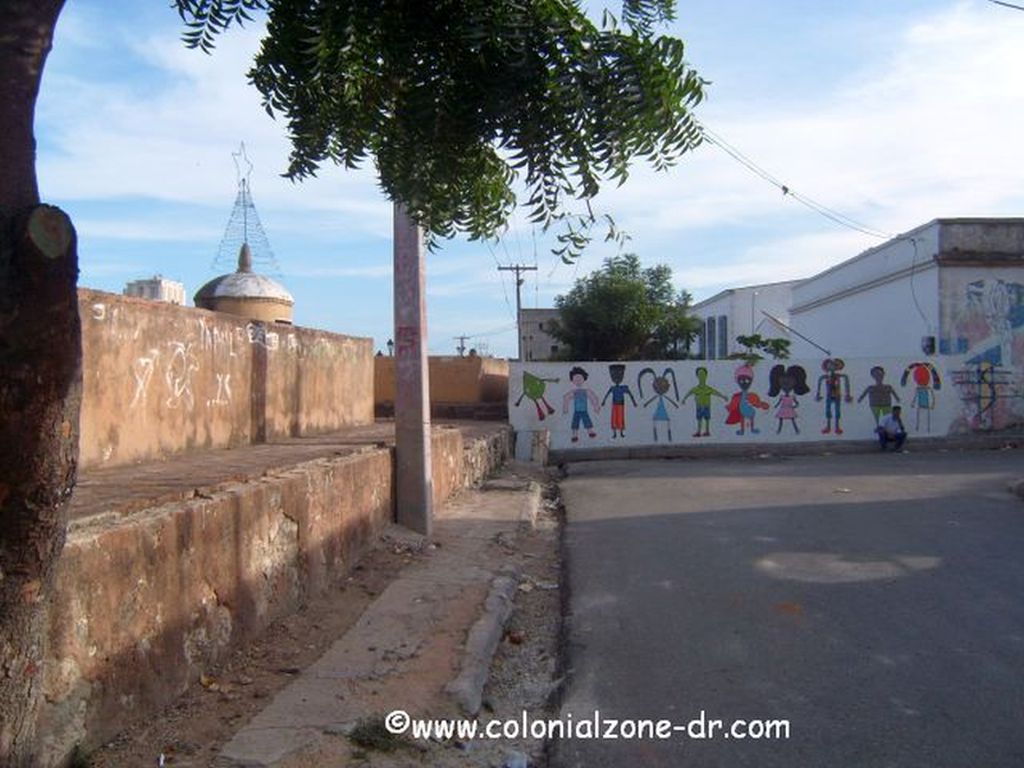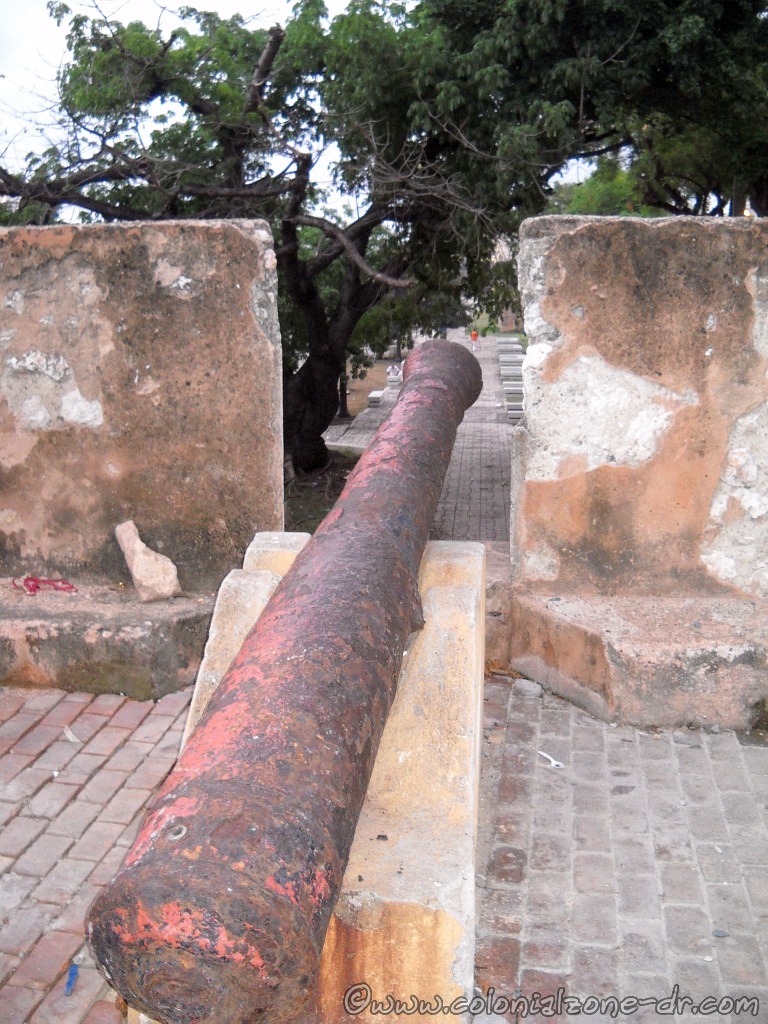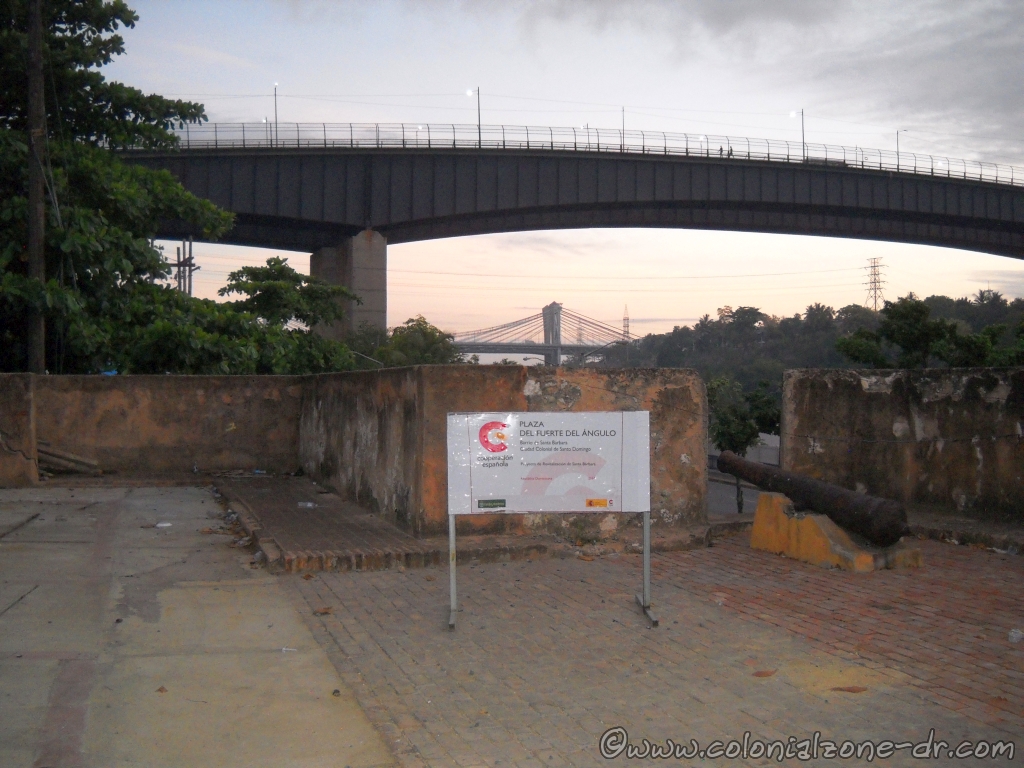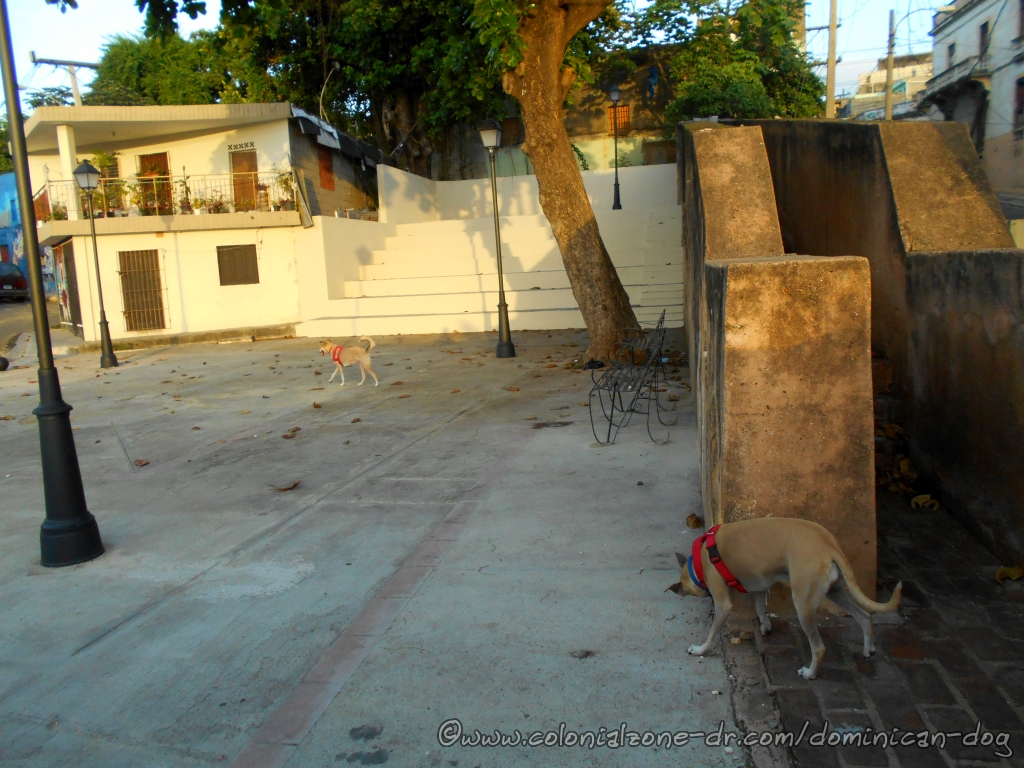Iglesia de San Miguel / Church Of San Miguel
Iglesia de San Miguel is named after the mighty archangel Saint Michael. The church is a small eighteenth-century temple that evolved from a sixteenth-century chapel.

Iglesia de San Miguel
The first mention of this church was in 1650. It was first constructed entirely of straw and in 1740 the temple was built with solid materials by order the Royal Treasurer of the Colony, Don Miguel de Pasamonte. At this time it was one of the richest chapels in the city.

Destroyed By Earthquake
The building was almost entirely destroyed in the big earthquake in 1751, as were many of the buildings in Colonial Zone. The Iglesia was entirely rebuilt in 1765 in a bad attempt at Baroque style. It was used as a parish during the construction boom of this era.

Home of Black Brotherhoods
The church ended up being located in “the black section” of town. In 1784 the building was to be a hospital for slaves. The decree was never followed and it never happened. Then, in 1796, it was decreed that San Miguel be called the Código Negro Carolino, the home of all the black brotherhoods. These African slaves and blacks who lived in this sector chose the warrior figure because they saw in the Archangel San Miguel a figure that would defend them from the white demons.


Arcángel San Miguel
With his sword held high, the image of Arcángel San Miguel located in the front of the church is impressive. This wood carving is thought to be from the late seventeenth century and belonged to the old hermitage. Archangel Saint Michael is the Angel who defends the people against Satan and is the prince of all the heavenly armies. The leader of God’s chosen army, he is the guardian angel and the protector of the Catholic Church.

Festival of San Miguel
The Festival of the Patron Saint San Miguel is held here every year on September 29th. Here is a link to a video on You Tube – Festival San Miguel Palos Music 2014

Location:
From Calle el Conde turn north (up the hill) onto José Reyes. Walk about 4 blocks to Juan Isidro Pérez near Calle Restauracion. It is in front of the nice tree filled park Parque San Miguel.




